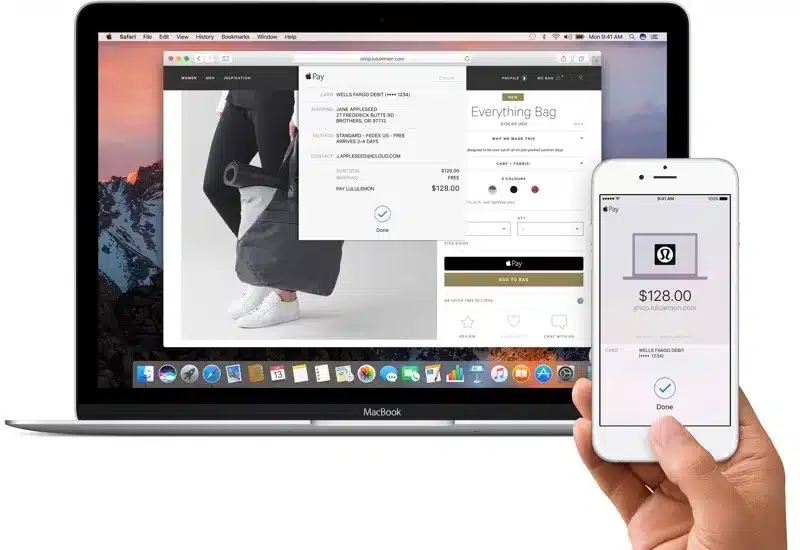If you’re an ecommerce business owner, then you know what it’s like when you hit that wall. When you just need a fresh idea, a new perspective, and a push in the right direction. So, what are the professionals suggesting are the smart decisions to move your business forward?
We’ve broken these 30 ecommerce business decisions into 3 sections:
- Strategies to strengthen the core of your business
- Decisions to nail your ecommerce marketing strategy
- Tips to help you close the sale every f*cking time
At the end, we give our absolute best piece of advice whether you are just starting a new venture, trying to breathe some new life into your ecommerce business, or just need some motivation to get it done.
Strategies to Strengthen the Core of Your Ecommerce Business
Everyone needs to strengthen their core, and I’m not talking about working out. The backbone of your business is your guiding arrow, the principles and practices you will keep coming back to over and over again. While these ecommerce tips may not be purely specific to ecommerce, they are even more important for ecommerce brands to pay attention to.
1. Never Underestimate the Power of SMART Goals
While it is a goofy phrase that sounds a little pretentious, SMART goals help you keep everything on track.
- Specific (don’t be vague, the more hyper-focused, the better)
- Measurable (you’ve got to be able to put your money where your mouth is)
- Achievable (keep it realistic, but dream BIG)
- Relevant (relate it to your business, not your personal goals)
- Time-bound (slap a time frame on it)
We aren’t saying SMART goals are going to help you make the best decisions of your life, but they will stop you from making decisions like that hairstyle you decided to sport in middle school (yikes).
2. Reinvest Profits Into Marketing (think compound investment)
You are going to be tempted to jump for joy at your first sale. After your celebration, don’t touch that money, though. You are going to want to take those funds and begin to use them to improve your business right away. Build momentum early so that you can make more money faster. Then you can start pocketing that profit!
3. Invest in Paid Ads Sooner Rather Than Later
One of the ways you could reinvest those profits is by investing in some paid ads. Pick the poison that makes the most sense for you from Facebook, Google, or hell, even print ads. Getting ads running early on will pay huge dividends down the road. You’ll also start to understand what your audience likes to bite into — test what works and learn from what doesn’t.
4. Choose the Right Payment Processor
Sometimes you may not have a choice, but if you can choose how you accept online payments, then it is a thing of beauty to pick the best one for you. PayPal is a popular choice for international ecommerce businesses. However, in our experience, we’d recommend the following for varied reasons. See which one fits into your business plan.

5. Stay Consistent
Especially at the beginning stages of any business, you are building credibility. You are trying to let your potential customers know, like, and trust you. The best way to get people gossiping about how cool your business is requires you to be consistent.
Whether you are posting on social channels, sending out regular emails, updating products, adding new products, etc. you need to do so consistently. Daily or once a month, you decide, but keep it consistent. People are animals deep down and we like to know what to expect.
6. Take Advantage of Google My Business
If you aren’t excited about taking advantage of an extra free page where you can display prominent information about your business, then we can’t help you. Google My Business allows you to take your search results of how people find your business on the Google Search Engine and have some control over the information displayed.
Think about it this way: if you search for a product on Google and see a business with a cover photo, pictures of staff listed, and an accurate address, email, and phone number as well as a business with just a name and website link…who are you buying from?
Take our word for it. The tool is there for the taking. We recommend taking it and updating it weekly to keep it near the top of the feed.
7. Track Analytics
The almighty Google Analytics (GA) is the head honcho of data, you could call it the Data Overlord. When set up correctly, GA provides the most realistic figures for your business, from all channels. Platforms like Klaviyo or JustUno can confuse you with attribution and replicated results, so always stick to GA when tracking analytics.
The information is being collected either way, so you may as well take a peek behind the curtain and learn how to become the Wizard yourself. Join a course if you’re a bit rusty.
8. Let Data Drive Strategy, Not Feelings
While we are talking data, it’s time to throw your personal feelings out the window. We are talking high-level ‘defenestration’. You need to eliminate saying anything like, “I feel like our ads are working!” You need to consult the data and let the data decide what is working and what isn’t. Adjust from there, feelings be damned.
9. Do Good Keyword Research Before SEO
You may have a brilliant business idea or a product that is unique and perfect for solving a particular problem. However, if you dive in and ramp up your SEO and haven’t made sure that people are searching for what you are offering, then all you’ve done is mostly waste your time.
Your unique, special idea may be a huge seller someday, but it is equally possible that people don’t know they are looking for your product yet. So use the keywords that they are looking for that also have to do with your business.
10. Build Your Email List
Is email marketing dead? We definitively say, “NO!”.
Having a social following is critical. Your social page is a rental property, though. You are at the mercy of your landlords and their rules — break ’em and you are done for. Or they break themselves (Deja Vu?) and everyone’s done…
An email list is yours forever. Even if your email service provider (ESP) goes belly-up, you are still in control of the information making up that contact list. You can take that list and move it to a new ESP. This makes the value of your email list exponential. For example, we generated £11m on one brand in 9 months via email. Build your email list, own your marketing. If you’re smashing it on the return from your email marketing, use a percentage of the profits to invest in Google Ads on lost leaders for new customer acquisition.
While it is acknowledged that email marketing is by far the best “go to” facility available – remember consumers subscribe to hear from you, an even better solution is hyper-personalisation. This is the latest development in e-commerce marketing where the software uses predictive analytics to calculate exactly what each consumer is most likely to buy next, creating the email content for you, personal and unique to each consumer. The leading solutions have distinct differences, but all use impressions and buying history to deliver pinpoint accurate offerings and an accredited 20x greater return.
The Best Decisions to Nail Your Ecommerce Marketing Strategy
Marketing. Are you bored of seeing this word yet? Well, marketing isn’t going anywhere. Your great uncle Al ran his business using modern (to him) marketing techniques and so should you. So here are some of the best damn marketing strategy tips we could find to put you on the straight and narrow.
11. Find Where Your Audience Is and Be There
This is a bit of a “no-brainer” tip, but you would be surprised how many ecommerce businesses overlook this detail. If your ideal customers are 40+ with families, then they are likely going to be on Facebook. If they are teenagers with some allowance burning a hole in their pocket, then they are going to be on TikTok and Instagram. Go where your audience is and if you’re not already, use tools like User Feel or Wynter to survey your target market and understand their wants and needs.
12. Build a “Gated Community”
Once you find them, build a gated community. Rather than sending out tons of leads and then having your team qualify them as a potential warm lead, have the customer self-qualify themselves as warm leads interested in what you have to offer.
A great example is running a Facebook Group for people who love using their espresso machines to make coffee. Make sure they can only enter if they, ya know, own an espresso machine at home and are interested in learning more about how to make espresso at home. Then, create content and build a community around that common interest and offer your espresso machine-based products or accessories to that group.
Self-qualified leads that keep engaging and coming back for more. Beautiful.
13. Create Affiliate or Referral Programs
Once you have some raving fans, offer them a discount or an extra goodie for bringing their friends and family into the fold. Make it worth their while and they will happily share something they love with those closest to them. Plus, you’ll have an interested customer with a positive referral coming your way.
14. Sell the Benefits, Not the Product
Here is something you might not have thought of, though. Even in ecommerce, you aren’t selling products. No, you are selling the benefits the product offers. Think of it this way, even if you are selling something super niche like Star Trek-themed espresso machines, you are selling the benefit of being able to make espresso at home that simultaneously showcases something the customer loves or that the person they are buying it for loves.
15. Pay for Fastest Shipping
If you want customers to love your brand, then help scratch their instant gratification itch. No one likes to buy something and then wait around for 7+ business days. Opt for the fastest available delivery option. Eat the cost if you have to. Your customers will love you for it.
(Due to current inflated shipping costs, this piece of advice may be difficult to achieve for international ecommerce businesses — we’re just being honest. Hopefully, it’ll pass.)
16. Offer Free Shipping
Remember when we said you should eat the cost if you have to? Well, you should eat the cost anyway (or build it into the price, if you are feeling brave). If you could get the same product for the same delivery time, then would you go with the one with free shipping or paid shipping? What if the prices were adjusted? More than likely, you would still go with the one with free shipping, if Amazon has anything to say about it…
17. Make Your Website Optimally Functional
Have you ever gone to a website and tried to navigate through and find the product you are looking for? What did you do when the website was clunky and the product was not where you expected?
A good website won’t necessarily increase sales, but a bad website will decrease sales. Especially if you’ve nailed your marketing, a bad website is a brick wall to all your hungry traffic. We recommend using GTmetrix to record your website speed and analyse where and why it’s slow.
18. Invest in Influencer Marketing
There are influencers out there right now who are creating the type of content you could see pairing with your brand. Keep looking for the perfect influencer and build a relationship with them.
Having a solid relationship can lead to opportunities to use them for advertising when they have the time and space available. If your ecommerce store uses Shopify, Refersion is a great tool for both influencer and affiliate marketing.
19. Use Great Copy
You know what it looks like when you are reading product descriptions or web content or blogs and it just…sucks. If you can’t bother to read the next line, then the copy isn’t doing it for you.
Go above and beyond and create awesome content that, as one copywriter puts it, “sells like hell.” And if you can’t write great copy yourself, then hire someone who can — they’ll pay huge dividends in the long run.

Tips to close all the sales, all the time
The hardest part of the ecommerce industry is making the sale. That’s what the entire industry is about. So, here are some of our best ecommerce tips for closing on those sales so that you don’t have to worry about it constantly. Set these practices up and let them run their course.
Make money while you sleep. You’re gonna love it.
20. Create a Memorable Experience
Create an experience around your product. Send a great thank you email with their purchase information. If they are getting a physical product, then have a special way of packaging or unboxing the item. The little touches will go a long way to making getting their purchase a memorable experience. All those dopamine hits will solidify their connection with your brand as a positive experience in their brain.
21. Take Full Advantage of User Generated Content
Let your customers take control of content creation. Do you sell customizable products? Promotional products? Then run a contest for submitting their designs and let the winner be a featured item of the month.
If you are selling espresso machines and run an email campaign to collect the best home recipes for coffee concoctions, then you can throw it all together in a PDF and distribute it to current customers (with recognition of their submissions, if they choose to disclose) while also using it as a lead generator for future customers. Get creative and have fun with it!
The power of UGC is mind-blowing when you look at the stats. For example, UGC-based ads get 4x higher click-through rates and a 50% drop in cost-per-click than average. If that’s not impressive, we don’t know what is.
Whole Foods is a great example of a brand using UGC to engage with its audience and use it to its advantage.
22. Price Match
This one might hurt your bottom line but if someone can find your product cheaper somewhere else, then it is worthwhile to offer a price match guarantee. Even if people don’t use it, studies have shown it is a proven method to increase sales just by including the price match guarantee. Otherwise, think about how seasonal or event-driven sales can help you match the competition.
23. Communicate Value at Every Step
More often than not, if your product isn’t selling well, then it isn’t because the product is bad. It is because the customer does not understand how the product is helpful to them.
Everywhere they can see the product the value of that product should be communicated. Help customers solve problems and help them to see multiple times how the product solves those problems and you will see an increase in sales and conversions.
24. Generate Urgency and Scarcity
People are more likely to get off the fence on a decision when they are convinced that there is a time limit on the offer. Flash sales and “nearly out of stock” notifications are simple ways to create this sense of urgency and scarcity in customers.
Don’t overuse this tactic, though. People don’t like to be stressed out all the time.
25. Create Video Content for Products
If you haven’t heard, video content is the way of the future. All social channels now prioritize video content, so you might as well create solid videos that can be used on both your social channels as well as on your product pages. Seeing your product in action will help potential customers visualize themselves using your product, which means they are more likely to hit that “Buy” button.
26. Collect Reviews
Reviews are your best friends! The positive reviews will bring you more customers and the negative reviews will give you a chance to improve, make things right with the reviewer, and display that you are interacting with and caring for customers and your products. You can also use customer reviews in your paid ads to increase credibility and conversion; human-to-human always sells best.
27. Recover Abandoned Carts
Carts are abandoned on an average of about 68%. That’s a lot of money left on the table. You are throwing money away by not setting up abandoned cart email automation. Seriously, we aren’t kidding. In 2020, we generated $99,403 for a US mattress brand from the abandoned cart flow alone, without having to do anything.
Once the automation is set up, watch the numbers rise as you recover all those lost customers.
28. Include Reviews on Abandoned Cart Pages
If you find that people are abandoning their cart on certain items, then slipping in some positive reviews on the cart page can give people that extra nudge to finish the purchase.
29. Test, Test, Test
The most important ecommerce business tip when it comes to marketing: is always be testing. Test new automations, new copy, new images, new videos. Test everything and always be testing something. You will never know what works best if you don’t keep trying new things.
Do something and get started!
If you have made it to this final point, then you should have 29 top-tier ecommerce tips to take your business to the next level.
But none of it amounts to anything if you don’t do something.
The worst thing you can do for your business is to do nothing, even failing at something will help you learn and grow for the next attempt. For all we care, print these out, put them on a giant dartboard and start with the first thing you hit. Just get it done.





